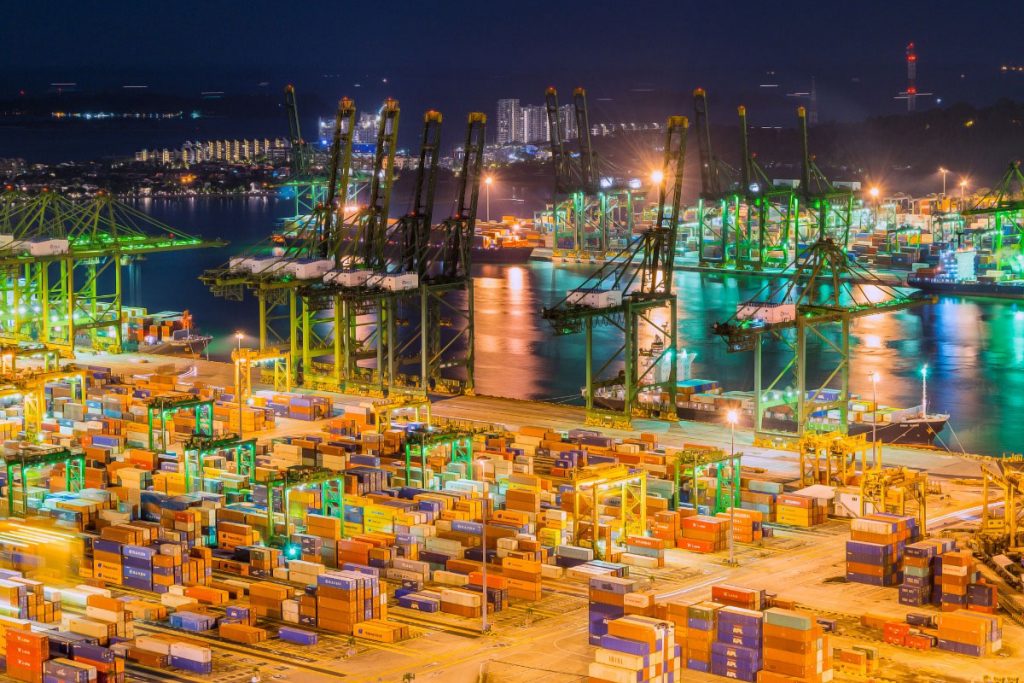Ports are critical to the global economy, facilitating international trade and commerce. According to the United Nations Conference on Trade and Development (UNCTAD), approximately 80% of global trade by volume and over 70% of global trade by value are transported by sea. There are more than 930 container ports worldwide. Annually these ports handle over 800 million TEUs (twenty-foot equivalent units) transported by a merchant fleet of over 50,000 ships. With the projected increase in global trade and economic growth, estimates suggest a USD 15 trillion infrastructure funding gap by 2040 across many categories, including sea ports. The role of ports and port infrastructure in facilitating global trade also binds these institutions to the worsening climate and environmental risks occurring across current and developing megacities. Sustainable ports can contribute to more effective circularity and social engineering models, particularly in emerging economies, to mitigate the effects of climate change. Initiatives to improve the environmental footprint of ports have existed for some time, but challenges remain. This article highlights sustainable ports as emerging players in the fight against climate change and the potential opportunities and challenges that lay ahead.
“In the search for solutions to combat climate change, no meaningful progress will be made without highly inclusive, scalable, and commercially driven urban-based solutions. These solutions should induce good public sector governance from national to municpal levels and promote growth of green jobs”
ClearSky 2100 Ventures
Ports and Megacity Development
Port infrastructure remains inextricably linked to economic development and the growth of urban environments, particularly megacities. In 2022 the world’s population surpassed eight (8) billion, with forecasts to approach 10 billion by 2050. Approximately 50% of the growth will come from just eight (8) countries (Nigeria, Ethiopia, Egypt, India, Pakistan, the Philippines, the Democratic Republic of the Congo, and the United Republic of Tanzania). Asia and Africa will drive future population growth. Rapid and uncontrolled urbanization will accompany this growth, with nearly 70% of the world’s population expected to inhabit cities by 2050. This compares to a 70% rural settlement rate in 1950.
Over the next 20 years, forecasted infrastructure demand presents a unique opportunity to develop sustainable ports, integrating various solutions, such as micro infrastructure climate tech platforms being developed by ClearSky 2100 Ventures and its partners, such as Canadian-based Provectus Enterprising. Sustainable development of megacities can only occur through robust engagement and alignment of a diverse set of stakeholders (public, private, individual) focused on circularity, consumption, and demand. Achieving these goals requires the development of effective social engineering and community engagement models tethered to micro-infrastructure climate tech hubs dispersed throughout the dense urban form. These platforms must be able to address a broad range of long-term urban challenges, including food security, landfill stress, weak governance models, etc. The large-scale single-site structure of ports provides synergies with these models to address various climate, environmental, and urban development challenges.
The level of urban density in megacities across the Global South, e.g., Dhaka, Manila, Bogota, Lagos, Cairo, etc., provides a useful environment to integrate these models and technologies, creating substantial economic value from the Base of the Pyramid upward. The substantial environmental, climate, and social challenges that persist across the Global South, combined with rapid urbanization and megacity development, supports the need for more commercially driven, effective urban-based solutions. Current credibility challenges within the nature-based solutions ecosystem create a window to focus attention and capital toward urban-based opportunities.
Top 20 Megacities 2010 – 2100e
2010 | 2050 | 2100 | ||||||
Rank | City | Population | Rank | City | Population | Rank | City | Population |
1 | Tokyo, Japan | 36,834,000 | 1 | Mumbai, India | 42,403,631 | 1 | Lagos, Nigeria | 88,344,661 |
2 | Delhi, India | 21,935,000 | 2 | Delhi, India | 36,156,789 | 2 | Kinshasa, Democratic Republic of Congo | 83,493,793 |
3 | Mexico City, Mexico | 20,132,000 | 3 | Dhaka, Bangladesh | 35,193,184 | 3 | Dar Es Salaam, United Republic of Tanzania | 73,678,022 |
4 | Shanghai, China | 19,980,000 | 4 | Kinshasa, Democratic Republic of the Congo | 35,000,361 | 4 | Mumbai, India | 67,239,804 |
5 | São Paulo, Brazil | 19,660,000 | 5 | Kolkata, India | 33,042,208 | 5 | Delhi, India | 57,334,134 |
6 | Osaka, Japana | 19,492,000 | 6 | Lagos, Nigeria | 32,629,709 | 6 | Niamey, Niger | 56,594,472 |
7 | Mumbai, India | 19,422,000 | 7 | Tokyo, Japan | 32,621,993 | 7 | Dhaka, Bangladesh | 56,149,130 |
8 | New York-Newark, USA | 18,365,000 | 8 | Karachi, Pakistan | 31,696,042 | 8 | Kolkata, India | 54,249,845 |
9 | Cairo, Egypt | 16,899,000 | 9 | New York City-Newark, USA | 24,768,743 | 9 | Kabul, Afghanistan | 52,395,315 |
10 | Beijing, China | 16,190,000 | 10 | Mexico City, Mexico | 24,328,738 | 10 | Karachi, Pakistan | 50,269,659 |
11 | Dhaka, Bangladesh | 14,731,000 | 11 | Cairo, Egypt | 24,034,957 | 11 | Nairobi, Kenya | 49,055,566 |
12 | Calcutta, India | 14,283,000 | 12 | Metro Manila, Philippines | 23,545,397 | 12 | Lilongwe, Malawi | 46,661,254 |
13 | Buenos Aires, Argentina | 14,246,000 | 13 | Sao Paulo, Brazil | 22,824,800 | 13 | Blantyre City, Malawi | 41,379,375 |
14 | Karachi, Pakistan | 14,081,000 | 14 | Shanghai, China | 22,824,800 | 14 | Cairo, Egypt | 40,910,732 |
15 | Istanbul, Turkey | 12,703,000 | 15 | Lahore, Pakistan | 17,449,007 | 15 | Kampala, Uganda | 40,542,502 |
16 | Rio de Janeiro, Brazil | 12,374,000 | 16 | Kabul, Afghanistan | 17,091,030 | 16 | Metro Manila, Philippines | 40,136,219 |
17 | Los Angeles-Long Beach-Santa Ana USA | 12,160,000 | 17 | Los Angeles-Long Beach-Santa Ana, USA | 16,416,436 | 17 | Lusaka, Zambia | 39,959,024 |
18 | Metro Manila, Philippines | 11,891,000 | 18 | Chennai, India | 16,278,430 | 18 | Mogadishu, Somalia | 37,740,826 |
19 | Moscow, Russian Federation | 11,461,000 | 19 | Khartoum, Sudan | 15,995,255 | 19 | Addis Ababa, Ethiopia | 36,371,702 |
20 | Chongqing, China | 11,244,000 | 20 | Dar es Salaam, United Republic of Tanzania | 15,973,084 | 20 | Baghdad, Iraq | 35,820,348 |
*Notes: Growth scenarios incorporate fertility, mortality, migration, and education rates expanding on the UN World Urbanization Prospects (WUP) framework.
Source: Hoornweg, D., & Pope, K. (2016). Population predictions for the world’s largest cities in the 21st century. Environment and Urbanization.
Based on data from the Global Cities Institute at the University of Toronto, by 2100, Lagos, Nigeria, and Kinshasa, Democratic Republic of Congo, will have populations of over 80 million. As expected, visibility and forecast accuracy decrease with an extended time horizon. Other forecasts paint a more accelerated picture. However, Shenzhen, China’s population growth from a little over 300,000 in 1980 to 18 million today provides insight as we consider socioeconomic development pathways. Today Shenzhen is regarded as one of the world’s largest port megacities. Debates on multi-decade growth aside, we expect significant megacity growth in the coming decades.
Today cities emit 70% of CO2 emissions, account for 75% of natural resource consumption, and 55% of our population. The relationship between urbanization, natural resource consumption, and biodiversity destruction is clear. As we consider solutions to combat climate change, scalable urban-based solutions must be part of the equation.
“…at least 3 billion people are likely to enter the global middle class by 2030. History shows that more affluent consumers demand more resource-intensive food such as meat, vegetables, and vegetable oils.”
Searchinger, T. (n.d.). Creating a Sustainable Food Future. World Resources Institute. https://www.wri.org/research/creating-sustainable-food-future
With the number of megacities expected to increase from 28 to 50 by 2050, many governments will struggle to meet the basic needs of a rapidly growing urban population. As a result, several core challenges will emerge, including:
Key Bottlenecks to Climate Resilience in Megacities
- Climate Refugees
- Urban GHG Emissions
- Waste Management & Landfill Stress
- Food & Water Security
- Land Use Conflicts
- Clean Energy Access
- Informal & Vulnerable Communities
The $15 Trillion Funding Gap
According to the Global Infrastructure Outlook, the world faces a global infrastructure investment gap (investment trends vs. investment needed) of USD 15 trillion investment gap by 2040. The investment gap covers a range of infrastructure categories, including renewable energy, water & sanitation, roads, ports, etc. Renewable energy and roads account for most investment needed, with Africa (USD 6 trillion) and the Americas (USD 20 trillion) requiring the largest investments.
Seaports face an investment need of USD 2.3 trillion through the year 2040. The funding challenge is particularly concerning for ports in the Global South, which are already facing problems regarding inadequate infrastructure and limited resources. The need is particularly acute in regions such as Africa, which the report projects to require more than USD 167 billion in port infrastructure investment by 2040. Estimates peg the funding gap in the Americas at USD 609 billion and USD 998 billion in Asia. We would note that given the database excludes several countries.
“75% of the infrastructure that will be in place in 2050 does not exist today”
2021 Global Status Report for Buildings and Construction. (n.d.). UNEP – UN Environment Programme. https://www.unep.org/resources/report/2021-global-status-report-buildings-and-construction
Ports and Climate Threats
Ports also remain subject to climate threats. The latest IPCC report paints a stark picture of our planet’s ability to achieve 1.5°C warming targets by 2030. Irrespective of whether we achieve these targets, we expect further increases in extreme weather and climate events over the short term. These weather events include temperature extremes, heavy precipitation, droughts, storms, etc. The IPCC places a high probability of these events with negative economic consequences for the foreseeable future.

Climate change impacts on ports are many. Global trade patterns will evolve as many governments pursue energy transition policies reducing demand for energy products (36% of global seaborne trade). Also, we expect shifting trade patterns as rapid urbanization accelerates across the Global South with growing product demand from a growing middle class requiring commodities and product sourcing to address the challenges emerging with megacity development. We expect to witness more supply chain bottlenecks from port closures due to extreme weather events.
Rising sea levels, an increasing occurrence, also will impact ports and port development. A recent study by researchers from the University of Southampton in the UK assesses the impact of climate change on port design and infrastructure. The study presents scenarios for future port demand and estimates the required port handling area for the year 2050, considering economic and demographic growth projections and the effects of climate change. The findings indicate that port demand will continue to grow in the coming decades, especially in developing countries.
The estimated required port handling area for the year 2050 ranges from 3,505 km2 to 5,054 km2, depending on the scenario, representing a significant increase from current levels. The estimated cost to address climate threats ranges from USD 283 billion to USD 768 billion. The authors also highlight the potential impacts of sea-level rise on port infrastructure and suggest that adaptation measures will be necessary to ensure the resilience of ports to climate change.
Ports and the Environment: Impacts on Health and Biodiversity
Ports significantly impact the environment as shipping and port operations produce large quantities of greenhouse gasses, such as carbon dioxide, nitrogen, sulfur, methane, and particulate matter. Ports also generate water pollution, leading to adverse health effects on local communities and marine ecosystems. Additionally, ports generate large quantities of waste, including food waste, which is a significant environmental concern. Other forms of pollution from ports and marine transport include:
- Wastewater: Ships periodically release sewage, wastewater, and bilge water, which is wastewater that is often contaminated with oil. Federal, state, and local governments, including port authorities, regulate discharges.
- Ship paint: Leaching of toxic paint additives, meant to prevent barnacles from clinging to ships, can result in health impacts on marine life.
- Stormwater runoff: Stormwater runoff gathers pollutants from paved surfaces at the port and deposits them in the water, often bypassing wastewater treatment plants.
- Nitrogen: Nitrogen is the leading cause of eutrophication in marine systems, where algae blooms use up oxygen in the water and cause fish and shellfish to die.
- Oil spills: Oil contamination can include chronic pollution from runoff, bilge water, and the loading and unloading of oil tankers, as well as larger spills resulting from overfilling tanker ships or tears in a ship’s hull.
- Dredge/dredging: Removing sediment to deepen ship channels can increase the cloudiness of water and disturb contaminated bottom sediment, harm or permanently destroy critical wildlife habitats, and disturb or kill threatened and endangered species.
Karachi, a rapidly expanding megacity, faces challenges with water pollution from its city and ports. Approximately 500 MGD of untreated effluent discharge is released into Karachi’s coastal waters annually. Additionally, over 90,000 tons of oil spillage from tankers, deep sea trawlers, and refineries enter coastal waters yearly from the Port of Karachi, which handles 60% of the nation’s cargo. The polluted waters along Karachi’s coastline negatively impact the aquatic food chain and marine biodiversity, raising food security and healthcare risks.
In the Philippines, plastics are an evergrowing source of pollution from ports. The Philippines ranks as the third largest contributor to plastic waste, generating over 2 million tons of plastic waste annually. Most of this waste ends up in the ocean. According to the UNEP, plastic waste can take up to 1,000 years to decompose, harming marine life, damaging soil, and posing health risks.
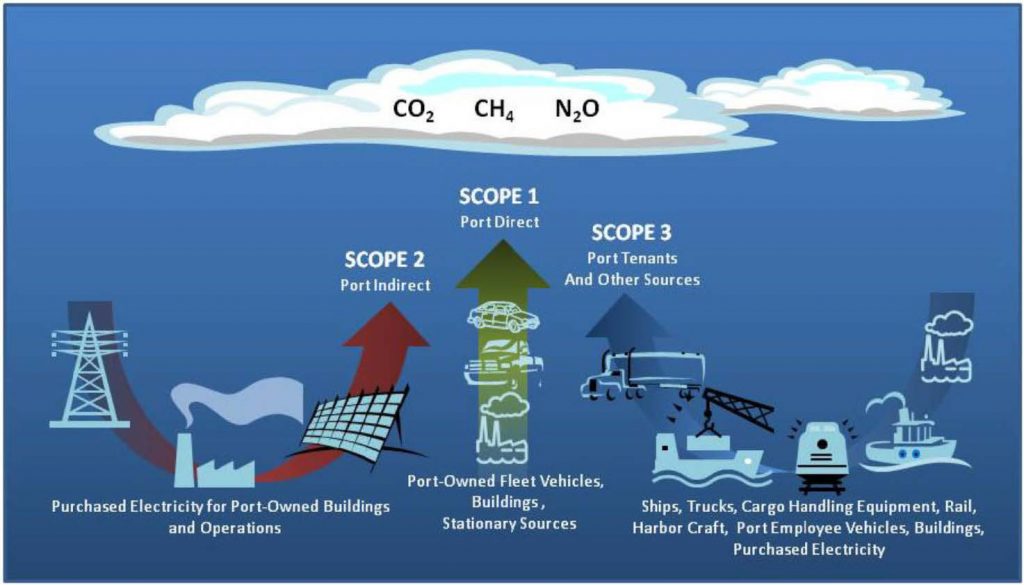
Source: IAPH – Carbon Footprinting – World Port Sustainability Program. (n.d.). https://sustainableworldports.org/project/iaph-carbon-footprinting/
Key stakeholders within both port ecosystems have taken a more active approach focused on better coordination with solid waste decision-makers and a commitment to addressing the issues. In Karachi, its port authority created divisions to address environmental issues at its ports, but significant challenges remain. The Philippines recently signed an agreement with the WWF to reduce plastic pollution at its major ports. The Philippine Ports Authority recently committed to expanding its Green Port initiatives by implementing more advanced climate mitigation measures. These challenges are not unique to Pakistan or the Philippines and their port infrastructure. Building sustainable ports remains essential, given the scale of the relationships between urban environments and coastal areas. For example:
- 75% of all large cities are located on coasts
- 50% of the world’s population lives within 60 km of the world’s oceans
- 70% of marine emissions occur within 400km of the coast
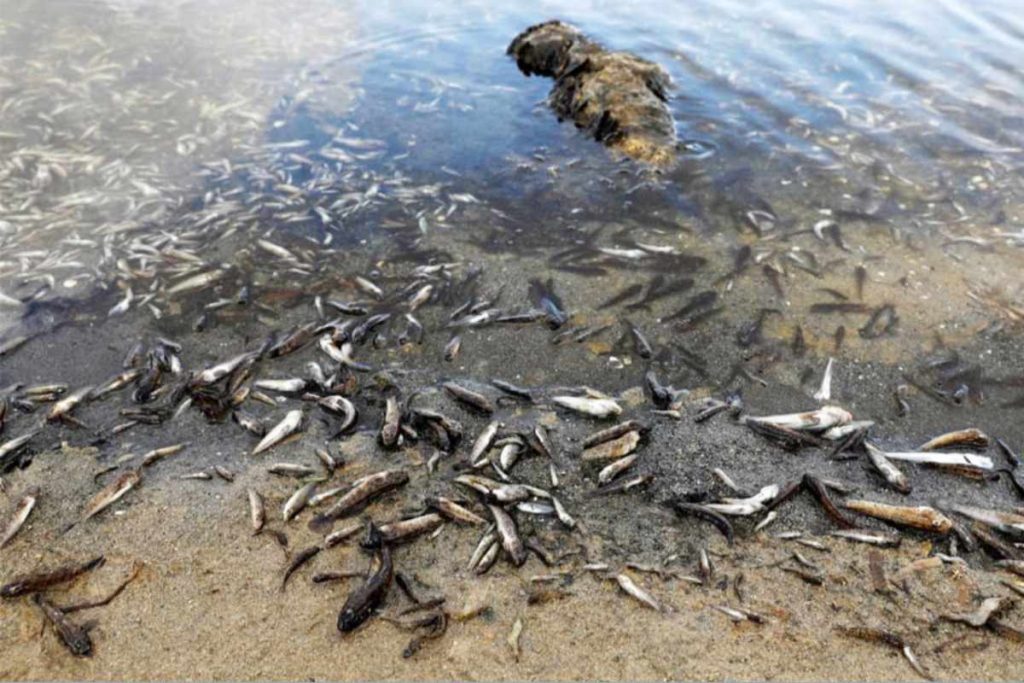
Various initiatives and treaties exist to mitigate pollution from marine transport, most notably the International Convention for the Prevention of Pollution from Ships (MARPOL). The convention was adopted in 1973 by members of the International Maritime Organization and applies to 99% of merchant tonnage. Since first implemented, several additional annexes addressing multiple pollution areas have been added.
The initial treaty and subsequent annexes govern various waste streams such as food waste, plastics, cooking oil, etc. The treaty addresses disposal methods, including distances from land and sea depths. Many hail the MARPOL treaty as one of the most successful treaties governing marine-based food waste. Despite its broad success, violations still exist.
Food Waste at Ports: What Gets Measured Gets Managed
Food waste is a significant challenge for ports worldwide, with vast amounts of food being discarded daily. Food waste has economic implications and environmental and social impacts, particularly regarding ports. According to the Food and Agriculture Organization of the United Nations, approximately 1.5 billion tons of food are transported globally every year. This includes both foods intended for human consumption and feed for livestock. The transportation of refrigerated goods, such as fruits, vegetables, and meats, also accounts for a significant portion of global food transportation. Based on food miles, nearly 60% of our food travels by sea.
In 2015, food systems totaled 34% of all greenhouse gas emissions.
Crippa, M., Solazzo, E., Guizzardi, D. et al. Food systems are responsible for a third of global anthropogenic GHG emissions. Nat Food 2, 198–209 (2021)
According to the Food and Agriculture Organization (FAO), approximately one-third of worldwide food is lost or wasted yearly. This includes transportation and storage. In ports, food waste is generated from various sources, including the disposal of unsold produce, processing, and packaging waste generated on ships. The disposal of food waste can lead to greenhouse gas emissions, as well as the attraction of pests and the potential spread of disease.
Food waste in ports can have a significant economic impact, with the cost of waste disposal and the loss of potentially valuable resources. Additionally, food waste creates social and health concerns, particularly in communities near ports. The odors and waste products from food waste can attract pests and create unsanitary conditions, threatening public health.
To address the issue of food waste in ports, various initiatives have been implemented worldwide. Some ports have developed waste management programs focusing on reducing food waste and increasing the use of organic waste. However, these initiatives are limited. Others have implemented sustainable practices in the handling and storing of food products, reducing the potential for waste.
Nicolas, J. (2020). Food companies have 7 days to remove cargo from ports. BusinessWorld Online. https://www.bworldonline.com/editors-picks/2020/04/05/287962/food-companies-have-7-days-to-remove-cargo-from-ports/
In addition, collaborations among ports, food producers, and waste management companies have been developed to address the issue of food waste. These collaborations focus on improving supply chain management to reduce waste and promote sustainability. These initiatives are mainly carried out at ports in developed countries in the US and EU, where environmental regulations are more robust. However, in developing countries, this level of stakeholder integration is limited and sometimes absent.
Challenges still need to be addressed due to insufficient food waste management practices at major ports. Affordable and well-tested technologies exist to enable ports to manage food waste better. Provectus Enterprising, a Canadian-based provider of food waste recycling and waste-to-feed technologies, represents growing examples of micro-based solutions for food waste management. Additionally, sustainability hubs and integrated technology platforms, such as those under development by ClearSky 2100 Ventures and others, must become part of the solutions to enhance sustainability initiatives at ports across the Global South.
Development of Sustainable Ports: Important but Minor Movements
Developing sustainable ports is becoming increasingly important as the global community recognizes the need for environmental sustainability. Sustainable ports are those that integrate sustainable practices into their operations, including the use of renewable energy sources, waste reduction and recycling, and the conservation of biodiversity. Sustainable ports also prioritize the reduction of emissions from shipping and port operations, which can contribute to global efforts to combat climate change. Within marine transportation, sustainability headlines typically focus on the decarbonization efforts of the shippers. Estimate peg the shipping industry’s emissions impact at 2-3% of total greenhouse gas emissions. However, the GHG impact of the goods transported is significantly higher. As part of the marine transportation ecosystem, ports have a role to play in promoting sustainable practices across the entire supply chain.
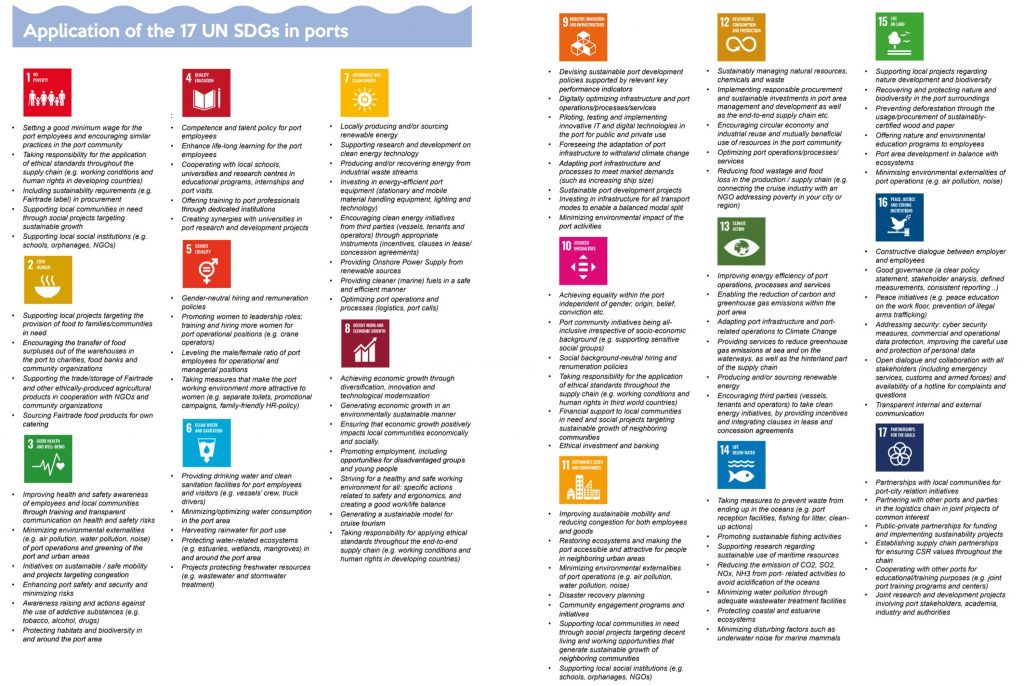
Source: World Ports Sustainability Program
The core aims of sustainable ports are to reduce their carbon footprint, minimize waste, protect the local ecosystem, and enhance the well-being of their employees and the local community. A few key areas where ports continue to make inroads include:
- Use of Renewable Energy: Sustainable ports use renewable energy sources, such as solar, wind, and hydropower, to reduce their dependence on fossil fuels and minimize their carbon footprint.
- Waste Management: Sustainable ports implement effective waste management systems to minimize waste generation and promote recycling and reusing of materials.
- Water Management: Sustainable ports ensure responsible water management, including treating and discharging wastewater and protecting local water sources.
- Sustainable Transport and Logistics: Sustainable ports promote sustainable transport and logistics practices, such as using electric vehicles, intermodal transport, and digital solutions to optimize logistics processes.
In 2017, the International Association of Ports and Harbors launched the World Ports Sustainability Program (WPSP) to assist ports in applying the UN’s Sustainable Development Goals to its member ports worldwide. Currently, there are over 200 projects registered by IAPH members and partners from the global port community. Areas of interest of the program include Environmental Care, Community Building, Climate, Energy, etc. The database represents one of the most comprehensive accounting of sustainability initiatives at port infrastructure, particularly in the Global South. The Association also hosts other programs, including the World Ports Climate Initiative and the World Ports Climate Action Program. Other noteworthy global sustainable port programs include the UNEP Global Clean Ports. Despite the global objective of the UNEP program to date, only five (5) projects have been studied.
Benefits of Sustainable Ports
Given the importance of ports in global trade and commerce, the success of any sustainable port initiatives can yield several benefits, including:
- Economic benefits: Sustainable ports can enhance economic growth through increased efficiency, reduced costs, and improved competitiveness.
- Environmental benefits: Sustainable ports reduce their environmental impact, promoting the protection of local ecosystems and reducing greenhouse gas emissions.
- Social benefits: Sustainable ports contribute to the well-being of their employees and the local community through improved working conditions. In the Global South, significant opportunities exist to increase financial inclusion.
- Improved Business Reputation: Sustainable ports enhance their reputation as responsible and environmentally friendly businesses, attracting new customers and partners.
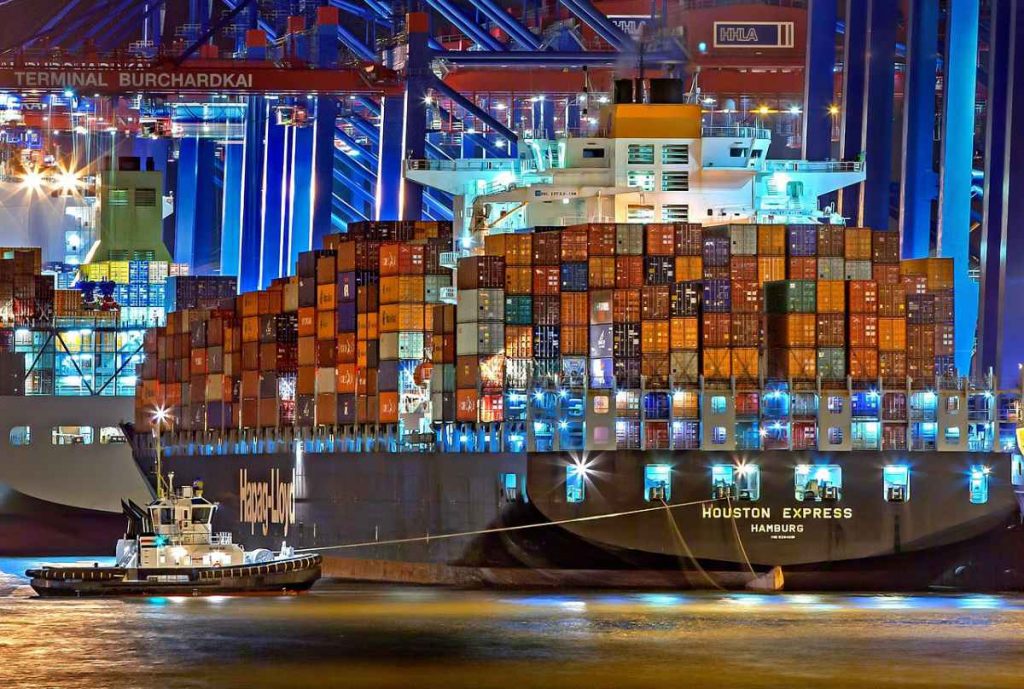
Sustainable Ports – Global North
The robust European and North American regulatory environments involving infrastructure combined with aggressive climate goals position EU and US ports as leaders in sustainability. Sustainability initiatives do vary across multiple categories. Within the sustainable ports project database, a few noteworthy initiatives offer the potential to integrate with the broader urban ecosystem.
Europe:
Port of Amsterdam – Upcycle Factory (2020)
The Port of Amsterdam aims for Net Zero status by 2050. It recently launched the Upcycle Factory to shift from a linear economy toward a circular economy. The project uses waste as secondary raw materials by finding the highest grade used for aggregated industrial scale waste streams using an intelligent demand-supply matching algorithm. It brings buyers and sellers together on a common platform utilizing blockchain technology. Currently, the project is in the pilot stage.
Port of Gothenburg – Hydrogen Production and Filling Stations (2021)
The Port of Gothenburg recently entered into an agreement to assess the potential for hydrogen storage and a filling station at the port. The results of the study will be available in 2023. The Port of Gothenburg is Scandanvia’s largest port, and hydrogen offers the potential to replace diesel which the port uses to fuel a wide range of heavy freight handling equipment. The planned facility will have an initial capacity of 4MW and up to two tonnes of hydrogen per day, with opportunities to expand capacity if demand warrants. The port’s exploration and shift to alternate fuels fit with Sweeden’s larger climate goal to reduce emissions from domestic transport by 70% by 2030.
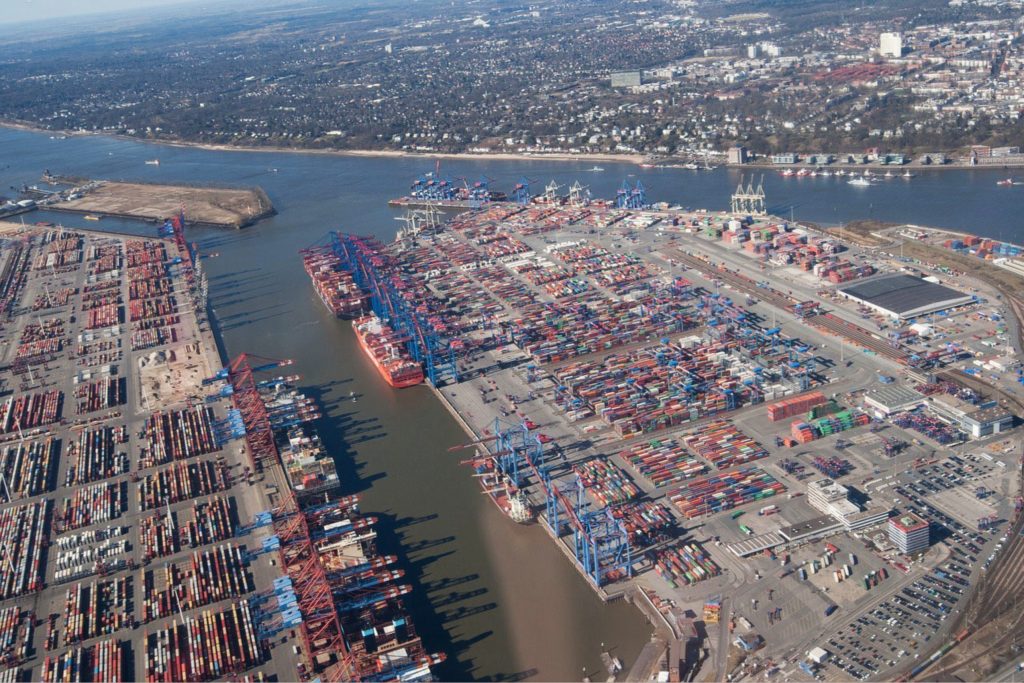
Sustainable Ports in the Global South
While sustainable ports are gaining traction worldwide, development in the Global South has been tepid due to various challenges, including a lack of investment and resources. However, several sustainable port initiatives have been implemented in the Global South, demonstrating the feasibility and potential for sustainable port development.
Latin America:
Port of Acu – Converting Waste into Value (2022)
The Port of Acu commenced operations in 2014 as Latin America’s largest deep water and private industrial port complex. Since then, the port has implemented several sustainability projects demonstrating its regional leadership. Of note is the project in waste conversion. Like many other developing economies, Brazil suffers from challenges in open dumping and landfill stress. More importantly, effectively managing organic waste at ports remains a key challenge worldwide. In 2019 the port launched a circular economy initiative: Feeding the Soil for Coastal Ecosystem Restoration. The project includes a treatment plant with a processing capacity of 50 tons per year, producing 7 tons of organic composite used to restore vegetation around the port area.

Africa:
Kenya Ports Authority – Tunahusika Corporate Social Investment Program (2018)
An excellent example of ports extending into the broader community, in 2018, the Kenya Ports Authority launched their Tunahusika Corporate Social Investment Program. As the largest employer in the coastal area, the organization has an obligation to support socio-economic development activities in the communities. The authority launched a variety of projects in the areas of education and healthcare. The Sahwhili Pot Hub is an initiative with the Kenya Ports Authority, Cisco Systems, and the National Museum of Kenya. The initiative’s main objective is to promote entrepreneurship in the port city of Mombassa. The Hub brings innovators, technologists, entrepreneurs, and artists together to network and develop new business ideas. Other elements of the social investment program include developing schools and libraries and beautification projects in the local area. The program objectives are laudable and offer a potential blueprint to engage a broader set of stakeholders needed to address climate resilience in urban areas.
Asia:
Fiji Ports – Green Port Initiatives (2019)
Fiji Ports have implemented several energy efficiency upgrades such as LED lighting, solar PV systems, replacement of a diesel-powered incinerator with an electric incinerator to reduce its carbon footprint. As a result, Fiji Ports have achieved an 11% average reduction of GHG emissions over the last five years. The port further intends to reduce its carbon footprint by 220 tonnes of carbon emissions by 2023 to reach carbon-neutral status concerning energy usage by 2027. Fiji Ports have implemented an “energy tracker” to monitor its progress in achieving the intended goals.
Solomon Ports – 3R (Reduce_Reuse_Recycle) Campaign (2019)
The Solomon Islands and other small island developing states remain at high climate change risk. According to the Department of Foreign Affairs and Trade, over 80% of the island’s population inhabits low-lying coastal areas. This puts the population at risk from storm surges, sea level rise, etc. Moreover, the country losses at least $20 million annually from earthquakes and tropical cyclones.
In 2019 Solomon Ports implemented a food waste campaign focused on pre-landfill strategies. Think before you bin! It saves energy and natural resources, helps to reduce pollution, and reduces the need for landfill. The 3R concept introduces a sequence of steps to manage waste properly. The top priority is to Reduce waste generation, then Reuse, and then Recycle, to give waste material a second chance before disposing them to the landfill. As waste management is a critical issue for the city of Honiara, Solomon Ports is taking this initiative to encourage members of the public in Honiara towards proper waste disposal practices.
Challenges in Achieving Sustainable Ports
Many of the world’s ports have committed to developing programs that address the UN Sustainable Development Goals. These commitments are an important first step. However, commitment to implementing projects appears to be waning. We suspect that efforts to scale sustainability initiatives at some of the world’s leading ports remain stalled. Additionally, a lack of clarity exists on the initiatives with the potential to scale, as many are in their infancy. Optimizing port infrastructure and ecosystems to maximize the potential contribution to sustainability initiatives remains complex.
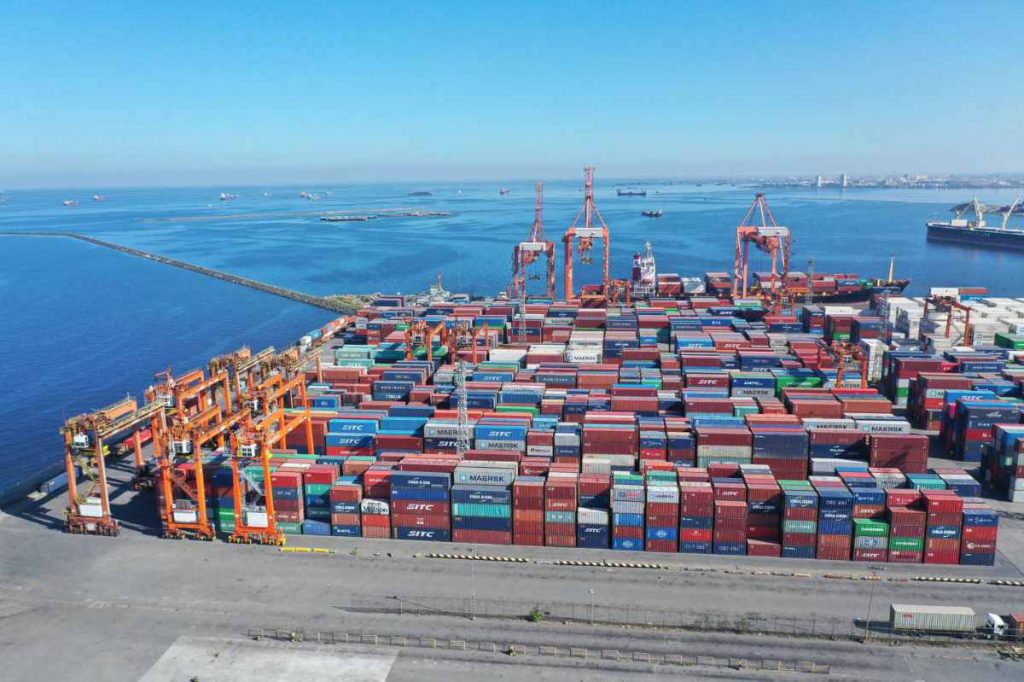
Many of the solutions implemented in the project database remain consistent with strategies found elsewhere that focus on single solutions eschewing more integrated models. Additionally, most programs do not extend beyond the port into the broader urban ecosystem except those focused on community building. Generally, some of the main challenges in implementing sustainable ports include the following:
- Poor Governance: Ineffective governance models remain a significant barrier to implementing and scaling port sustainability initiatives. Lack of transparency in decision-making, the weak rule of law, political stability, and corruption impact sustainability initiatives and broader opportunities for infrastructure investment.
- Technological limitations: The adoption of sustainable technologies may be limited by the availability of appropriate technologies, the capacity of port operators, and the lack of technical expertise. Technical assistance and capacity-building programs can help overcome these barriers.
- Institutional and regulatory challenges: Institutional and regulatory barriers, such as inconsistent environmental regulations, can hinder the transition to sustainable ports. International and national regulatory frameworks, as well as industry standards, can help to overcome these challenges.
- Financial barriers: The transition to sustainable ports can be costly, requiring significant investments in new technologies and infrastructure. Governments, private companies, and international organizations can collaborate to provide financial support and incentives for sustainable port development.
Final Thoughts: Moving the Needle to Scale Circularity
Rapid urbanization and population growth across the Global South are inevitable features of the growth cycle of societies. The fundamental question is whether it can be done sustainably in African and Asian societies currently experiencing an upward trend in their growth cycle. Many current and emerging megacities across the Global South continue to face challenges in building climate resilience models to support sustainable cities. These challenges will intensify in the coming decades.
It’s important to note that several countries experiencing rapid growth have articulated lofty ambitions for per capita income levels by 2050. Vietnam and the Philippines come to mind, with both countries aiming for high-income status on or before 2050. Unfortunately, many of these goals are articulated without an accompanying perspective on consumption and waste. The global economy consumes, on average, 100 billion tonnes of extracted materials. This rate of consumption will double by 2050. As the rate of circularity falls across the global economy (7.2% in 2023 vs. 9.1% in 2018), breaking out of linear consumption patterns appears more elusive than ever. Creating scalable and sustainable solutions requires understanding these societies’ growth ambitions and the social and political bottlenecks. Any ideas for solving these urban challenges, of course, must be urban-based.
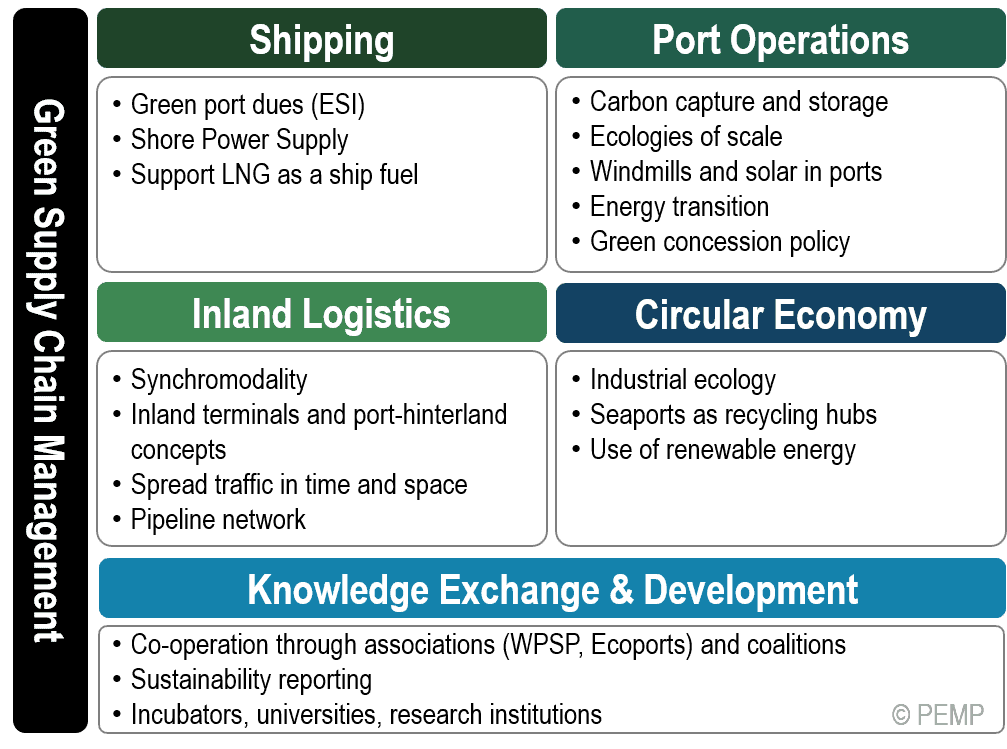
Source: Port Economics, Management & Policy
The approach of ClearSky 2100 Ventures and partners to building climate resilience sees substantial benefit in developing micro-infrastructure platforms. These infrastructure platforms should be multi-tech, modular, and scalable, able to accommodate evolving consumption and waste behavior from an emerging middle class in transitioning societies. Admittedly, our model departs from the traditional solutions framework of large-scale and single technologies. While important, large-scale infrastructure offers only partial value when designing highly inclusive and flexible solutions for a dense urban form. Moreover, these platforms should be well suited for the urban environment and able to integrate with peripheral urban infrastructure such as ports.
Ports are the entry point for the consumption of goods necessary to fuel megacity growth, and their importance as an essential piece of the broader infrastructure puzzle is clear. Given the backslide in circularity initiatives, their role in finding solutions becomes even more important. Developing sustainable ports is crucial for the future of the global maritime industry and sustainable economic development and growth across the Global South.
Sustainable ports offer opportunities to support responsible consumption initiatives, potentially providing tens of thousands of green jobs worldwide. More important sustainable ports are part of the push to promote and develop sustainable infrastructure. According to some estimates, sustainable infrastructure directly or indirectly impacts the attainment of 92% of SDGs. We are encouraged by the progress made in sustainable port initiatives worldwide. However, more can be done given a port’s outsized influence on broader economic development and growth. Many of these sustainable port initiatives highlighted are relatively new, so time will tell on the ability to move the needle and scale circularity. In the Global South, challenges remain around weak governance and the complexities of stakeholder alignment, particularly in those economies experiencing rapid growth and urbanization.
Across many industries, such as energy and waste, today’s well-tested and accepted solutions can meaningfully move the needle on climate change. This represents a foundational pillar of the Project ClearSky 2100 thesis. Timid leadership on climate, weak governance, and the absence of commercial-minded stakeholders are some of the bottlenecks to success. Cleantech solutions such as renewable energy, organics management, clean water, etc., are but a handful of solutions that can be integrated into the existing and future sustainable port infrastructure. This will help strengthen sustainable initiatives and maximize the contribution of port infrastructure to promoting sustainable cities and a greener future.
To discuss opportunities and programs for Green Ports, contact Zack at zack@provectusme.com or James at support@projectclearsky2100.com
A Resource Guide:
Below are some useful resources that offer deeper insights into global activities in sustainable ports.
International Association of Ports and Harbors http://www.iaphworldports.org/ | A global organization that provides resources and guidelines on sustainable port development. The IAPH maintains a comprehensive database of sustainable port projects. |
World Ports Sustainability Program https://sustainableworldports.org/ | A program launched by IAPH to support the sustainability efforts of ports worldwide and share best practices and resources. |
Green Marine https://green-marine.org/ | A North American environmental certification program for the maritime industry, including ports |
European Sea Ports Organization https://www.espo.be/ | An organization that promotes sustainable port development in Europe and provides resources and guidelines on sustainability. |
PortEconomics https://www.porteconomics.eu/ | A research group that provides insights on the economic and environmental aspects of ports and maritime transport. |
United Nations Conference on Trade and Development https://unctad.org/ | A UN agency that provides information and research on port development and sustainability. |
Port Technology https://www.porttechnology.org/ | A website that provides news and articles on the latest technologies and practices in the port industry, including sustainability |
The Green Port https://www.portstrategy.com/greenport/ | A publication that focuses on sustainability in the port industry and provides case studies and best practices from ports worldwide |
Port Strategy https://www.portstrategy.com/ | A magazine that covers the latest trends and developments in the port industry, including sustainability. |
International Maritime Organization https://www.imo.org/en/ | A specialized agency of the United Nations that is responsible for measures to improve the safety and security of international shipping and to prevent marine pollution from ships |
World Shipping Council https://www.worldshipping.org/ | The primary industry trade association representing the international liner shipping industry, which offers regularly scheduled service on fixed schedules. Most liner carriers are container shipping lines. |
International Chamber of Shipping https://www.ics-shipping.org/ | The International Chamber of Shipping is one of the world's principal shipping organizations, representing around 80% of the world's merchant tonnage through membership by national shipowners' associations |
APEC Port Services Network https://www.apec.org | An international organization established to bring together port and port-related industries with senior representatives in APEC member economies. |
Port Economic Management and Policy https://porteconomicsmanagement.org/ | A publication that analyses the contemporary port industry and how ports are organized to serve the global economy and regional and local development needs. |
